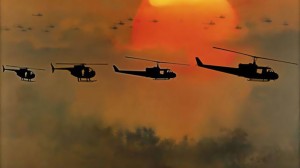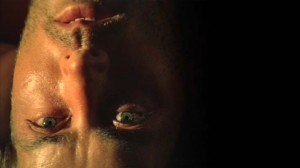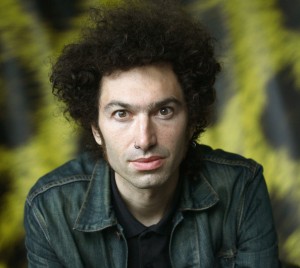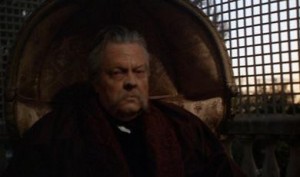Written for the catalogue of Il Cinema Ritrovato, June-July 2016. — J.R.
Apocalypse Now


Like much of Coppola’s best work -– The Conversation, the Godfather trilogy, Bram Stoker’s Dracula –- Apocalypse Now teeters on the edge of greatness, and perhaps it wouldn’t teeter at all if greatness weren’t so palpably what it was lusting after. To my mind it functions best as a series of superbly realized set pieces bracketed by a certain amount of pretentious guff, some of which could be traced back to Joseph Conrad’s novella Heart of Darkness, the movie’s point of departure, as well as some powerful voiceover narration written by Michael Herr, whose book Dispatches offered some authentic glimpses of the war from the American side. Much of the guff, I would argue, stems from the fact that Coppola never quite worked out what he wanted to say, a fact he often acknowledged at the time. Indeed, Coppola’s continuing doubt is a major element of the saga being celebrated here: the Passion of the Artist writ large, made to seem far more important than the mere suffering and deaths of a few hundred thousand nameless and faceless peasants (and American soldiers) across the South China Sea. Read more
From Cinema Scope No. 50, Winter 2012, as part of a feature, “50 Best Filmmakers Under 50”. — J.R.

Many reviewers of Azazel Jacobs’ four features understandably place them in a direct lineage from his father Ken’s work. Both filmmakers are clearly preoccupied with interactions and crossovers between fiction and nonfiction — although the same could be said of everyone from Lumière, Méliès, and Porter to Costa, Hou, and Kiarostami. And both are remarkable directors of actors/performers, even though, in the case of Ken, projectors and found footage have performative roles along with people. The dialectics forged by opposite coasts and mindsets — corporate Hollywood vs. flaky New York Underground, claustrophobic obsession/fixation versus airy and uncontrollable street theatre — are equally constant.
Most reviewers are quick to point out that Azazel is more committed to narrative than his father. It’s easy to see what they mean, but some of their assumptions are worth questioning. If part of what we mean by “narrative” is plot and incident, there may be more of both contained in the intertitles of Ken’s The Whirled (1956-63) than there is in the main action of Azazel’s second feature The GoodTimes Kid (2005). If part of what we mean is “character,” then the work of both filmmakers is overflowing with it, from Jack Smith’s manic cavorting in many of Ken’s films to Diaz’s exhilarating dance in The GoodTimes Kid, not to mention John C. Read more
From the Chicago Reader (October 1, 1996). This film is now readily available in the U.S. and the U.K., and while writing an essay about it for the Criterion release, I came to treasure it a lot more than I did when I wrote this capsule. — J.R.

This rarely screened hour-long Isak Dinesen adaptation by Orson Welles — his first release in color (1968), originally intended for a never-completed anthology film — is far from one of his most achieved works. But thematically and poetically it exemplifies his late lyrical manner, and it provides clues as to what his most treasured late project — another Dinesen adaptation called The Dreamers, for which he shot a few tests — might have looked like. Set in 19th-century Macao (though filmed modestly in France and Spain), this parablelike tale stars Welles as a lonely and selfish merchant who gets his Jewish secretary (Roger Coggio) to hire a courtesan (Jeanne Moreau) and a sailor (Norman Eshley) to reenact a story. It’s awkward in spots yet exquisite. (JR)
 Read more
Read more




